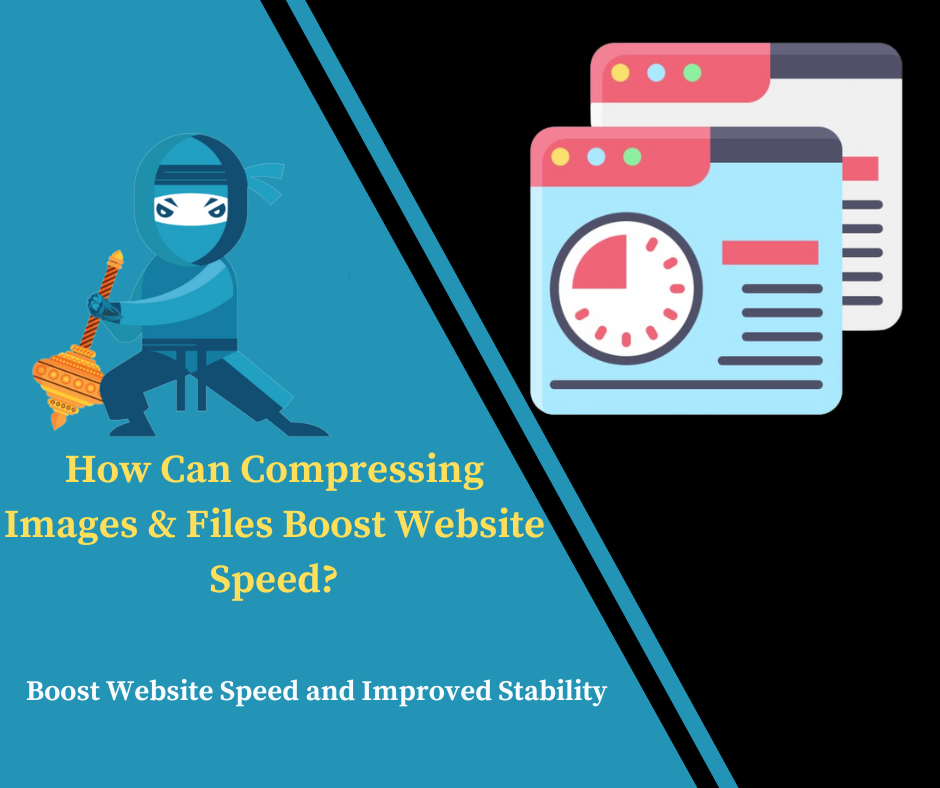How Can Compressing Images & Files Boost Website Speed?
In the digital era, website speed is a key factor in both user experience and search engine optimization (SEO). One of the most effective ways to enhance your website’s speed is by compressing images and files. By focusing on this strategy, you can achieve faster load times, improved user satisfaction, and better SEO performance. This article explores how compressing images and files can significantly boost website speed and offers practical tips to implement these techniques.
The Impact of Image and File Compression on Website Speed
Why Website Speed Matters
Website speed plays a crucial role in user experience and retention. A slow-loading website can frustrate users, leading to higher bounce rates and lower engagement. Additionally, search engines like Google use page speed as a ranking factor, meaning faster websites are more likely to achieve higher rankings in search results. By compressing images and files, you can reduce the time it takes for your pages to load, thereby boosting your website speed and overall performance.
The Role of Images and Files
Images and files, such as CSS, JavaScript, and fonts, are integral to a website’s functionality and visual appeal. However, large or unoptimized files can drastically affect load times. When users visit your website, their browsers need to download these assets, which can be time-consuming if the files are too large. This lag can lead to a poor user experience, higher bounce rates, and even lower search engine rankings.
Benefits of Compressing Images and Files
1. Faster Page Load Times
Compressing images and files reduces their size, which directly decreases the amount of data that needs to be transferred over the Internet. This results in faster page load times, allowing users to access your content more quickly and efficiently.
2. Improved User Experience
A faster-loading website enhances user experience by providing a smoother and more responsive interface. Users are more likely to stay on your site and engage with your content if it loads quickly, leading to higher retention rates and increased satisfaction.
3. Enhanced SEO Performance
Search engines prioritize fast-loading websites in their rankings. By compressing images and files, you improve your website’s load times, which can contribute to better SEO performance and higher visibility in search engine results.

4. Reduced Bandwidth Costs
Smaller file sizes mean less data is transferred from your server to users’ devices. This can help lower bandwidth costs, especially for websites with high traffic volumes or those hosted on pay-as-you-go plans.
5. Better Mobile Performance
Mobile users often experience slower network speeds compared to desktop users. Compressing images and files ensures that your website performs well on mobile devices, providing a better experience for users on the go.
How to Compress Images and Files Effectively
Image Compression Techniques
1. Use Image Compression Tools
There are several tools available that can help you compress images without significant loss of quality. Some popular options include:
TinyPNG: A web-based tool that compresses PNG and JPEG images while maintaining quality.
JPEG-Optimizer: Allows for adjusting the quality and compressing JPEG images.
ImageOptim: A macOS application that reduces file sizes for PNG, JPEG, and GIF images.
2. Choose the Right File Format
Selecting the appropriate file format for your images can impact their size and quality. Common formats include:
JPEG: Ideal for photographs and images with many colors.
PNG: Best for images with transparency or sharp edges.
WebP: A modern format that offers superior compression and quality compared to JPEG and PNG.
3. Resize Images
Ensure that your images are appropriately sized for your website. Resize images to the dimensions they will be displayed at, avoiding the need for the browser to scale them. This can significantly reduce file sizes and improve load times.
Also read: Using Social Proof to Skyrocket Your E-Commerce Store Sales
File Compression Strategies
1. Minify CSS and JavaScript Files
Minification involves removing unnecessary characters, such as spaces and comments, from your code files. This reduces their size and improves load times. Tools like UglifyJS (for JavaScript) and CSSNano (for CSS) can help with this process.
2. Enable Gzip Compression
Gzip is a widely used method for compressing files sent from your server to users’ browsers. Enabling Gzip compression in your server settings can reduce file sizes by up to 70%, leading to faster page loads.
3. Utilize Content Delivery Networks (CDNs)
Content Delivery Networks (CDNs) cache your compressed files on servers distributed around the globe. This ensures that users access files from a server closer to their location, further enhancing load times and overall website speed.
Best Practices for Compressing Images and Files
1. Regularly Audit Your Website
Regularly review and optimize your images and files to ensure they are performing efficiently. Use tools like Google PageSpeed Insights and GTmetrix to identify areas where further optimization is needed.
2. Balance Quality and Compression
While compressing files is essential, it is important to balance file size with quality. Excessive compression can lead to a loss of image or file quality, which can negatively impact user experience. Test your images and files after compression to ensure they maintain acceptable quality levels.
3. Automate Compression Processes
Consider using automation tools and plugins that integrate with your content management system (CMS) to streamline the compression process. This ensures that all new images and files are optimized automatically, saving you time and effort.
FAQ
What is the difference between lossless and lossy compression?
Lossless compression retains all the original data in the image or file, preserving quality. Lossy compression reduces file size by removing some data, which may affect quality. Choose the method based on your needs for quality and file size.
How often should I compress images and files on my website?
It is a good practice to compress images and files whenever you upload new content to your website. Additionally, regular audits and optimizations can help maintain optimal performance over time.
Can compressing images and files affect the functionality of my website?
Proper compression should not affect the functionality of your website. However, excessive compression or improper techniques can lead to degraded quality or errors. Always test your website after making compression changes to ensure everything functions correctly.
Are there tools that can help automate the compression of images and files?
Yes, several tools and plugins can automate compression processes, such as Smush for WordPress, ImageOptim for macOS, and FileOptimizer for various file types. These tools can help ensure that all new content is optimized without manual intervention.
How does improving website speed impact SEO?
Search engines prioritize fast-loading websites, so improving website speed can positively affect your SEO rankings. Faster page loads contribute to a better user experience, lower bounce rates, and higher visibility in search engine results.
Conclusion
Compressing images and files is a powerful strategy for boosting website speed and performance. By reducing file sizes, you can achieve faster page load times, enhance user experience, and improve SEO rankings. Implementing effective compression techniques and regularly optimizing your website’s assets will help you stay competitive in the digital landscape. Start compressing your images and files today to enjoy the benefits of a faster, more efficient website.








